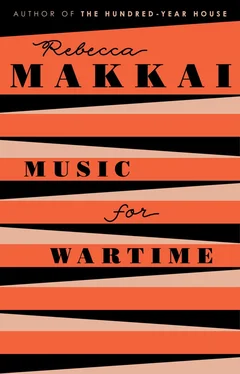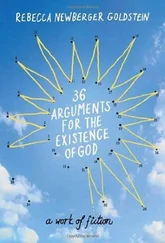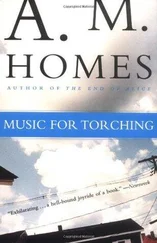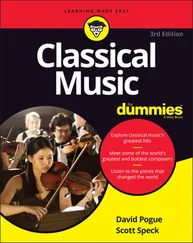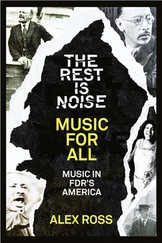Exactly six years before the picture was taken, I came out purple, the umbilical cord wound three times around my neck — as if some tribunal in utero had found me guilty for the crimes of a past life. My pardon came from the doctor’s quick fingers.

Two years and eight months later, my grandfather would call to joke about the time difference. “Happy New Year! I’m calling from the old year! Tell me, what is the future like?” We were as delighted by the joke as by the elaborate obstacle courses he set up in the basement the few times he came to Chicago — mazes and prizes and puzzles and traps.

Twenty years later, looking at the photo and forgetting the thunderstorm looming overhead, I would wonder if it was the suggestion of a bomb that made my father turn his face to the sky, where the bombs of his childhood had screamed. He squints, hands on hips, as if awaiting a message.

Less than one year later, I would take my first photograph, a color Polaroid of my grandfather balancing on his head in his Honolulu apartment. He was bare chested, his legs lotus folded in the air. He would stay like that for twenty minutes.

Another photograph, fifty years older: that same grandfather in strikingly Napoleonic parliamentary uniform, inscrutable and highly decorated, a wry smirk my daughter will inherit. He was also (in one of the all-time great conflicts of interest) the editor of Budapest’s daily newspaper. Sometime in 1941, following the suicide of the beleaguered and betrayed Hungarian president, Pál Teleki, and following the gains of the fascist Arrow Cross Party and the manipulations of the Germans, he denounced the encroaching forces at a meeting that the Gestapo officer Veesenmayer had called for Hungarian journalists. He was already running an anti-German radio station from the Buda Hills. It would broadcast until March 19, 1944, the day he was arrested.

Six years and seventeen hours before the photo of the bomb, I began to push my way out. My mother could not get up to change the channel on the hospital-room TV, nor could the Jewish woman in the next bed, and so for an hour, including the time it took for the short nurse to find a taller nurse who could reach the buttons, their labors were presided over by the final episode of the NBC miniseries Holocaust , starring Meryl Streep. The next day, the twentieth, I was born. It was the eighty-ninth anniversary of Hitler’s birth. Whether NBC planned the broadcast accordingly is unclear.

Twelve and a half years after the picture was taken, when my sister was in her thirty-ninth hour of labor, I would light a votive for her in Ely Cathedral because, although I didn’t believe in anything like that, she did. I would remember the picture, how her twelve-year-old body flew through the air, her black hair straight out behind.

Forty years earlier, held in a Budapest jail cell, my grandfather learned hatha yoga from a shot-down RAF pilot named Nigel who had grown up in India during the Raj. They closed their eyes and, as the bombs rained light through the small, unreachable windows, tried to levitate.

Ten minutes before the picture, the air had grown so thick with humidity that my grandfather, his lungs worn and clogged, had to elevate his arms to get enough oxygen.

Four hundred and forty-three years before the photo was taken, Suleiman seized the city of Buda without firing a single shot. There are those who would pinpoint this moment as the beginning of the end of Hungarian autonomy — a trajectory that continued through entanglement in a pointless world war, a 1920 treaty that carved off 70 percent of the country’s land, and obeisance to increasingly dangerous German demands. But many would argue that the moment the country crossed from mere capitulation into actual complicity, the moment Hungary’s moral Rubicon was crossed, was with the writing and passing of its own Jewish laws in 1938, 1939, and 1941.

Two minutes before the photo was taken, I had unwrapped Kyle Davidoff’s present, a black plastic ball with a thick white string protruding, cartoon-style. “It’s a real bomb ,” he said. “ Not a toy. It’ll blow up in about, like, two minutes.” So we put it on the table and waited.

Twenty-five years later, a man in the audience will raise his hand and ask why all my stories are about guilt. I will say, “I hadn’t realized they were.”

Less than a second earlier, my sister had bounced up, impossibly high, from the neighbor’s trampoline, one backyard and a steep hill behind ours. Her arms stretched east, and her feet pointed west. She would belly-flop, but in the picture, it looks for all the world like she’s flying and won’t ever come down.

Seven years after the photograph, another call from Hawaii, my grandfather attempting his old joke: “Which happened first for you?” he almost shouted into the phone. “The sunrise or the sunset? It is very important that I know!” He sounded strangled.

Forty-five years before the photo, the Second Jewish Law, significantly harsher than the first, was introduced to the Hungarian legislative assembly. The law was penned, revised, introduced, and argued for by the man born Makkai János in Transylvania in 1905, the man who died John D. Makkay in Waianae, Hawaii, in 1994. There were several practical motivations, if one can use the word, having to do with intense German pressure, with the promise of regaining lands lost in the Treaty of Trianon, with the country’s overcrowding by a wave of Jewish refugees from Germany and Romania. But then there are also his words, entered in the public record: “Jews, wherever they are present, regularly bring forth anti-Semitism out of themselves.” Long after the bloodstains of the ensuing years have faded, those words are indelible.

Six years, forty-two weeks, and five days before the photo, I settled suspended in the amniotic pool. I would spend an extra half month there, breathing liquid and floating.

I have been assured, for what it’s worth, that he felt remorse. What that remorse entailed, how deeply it was felt, and whether his anti-Nazi stance represented any change of heart regarding the Jews or was simply a further expression of racial superiority, this time against the usurping Germans, I am unable to work out. And even if I could, the question would remain: Is chronology character?
Читать дальше
